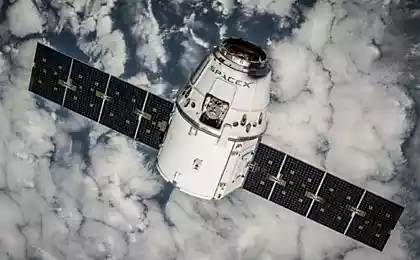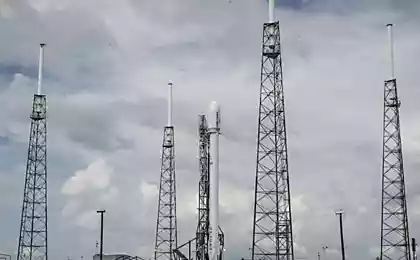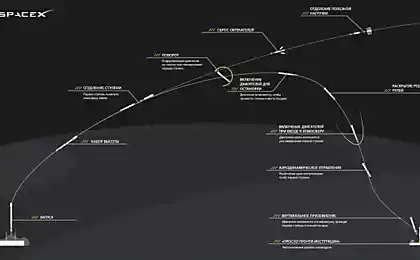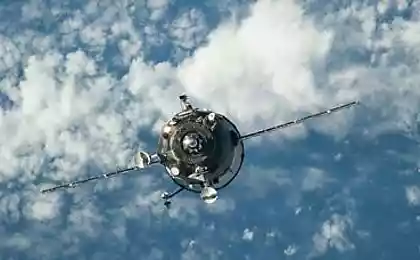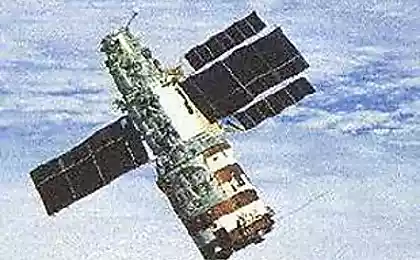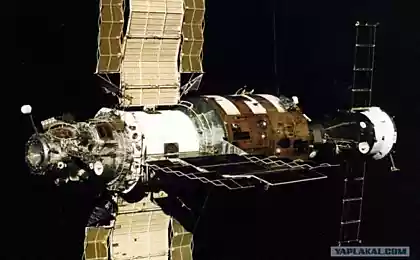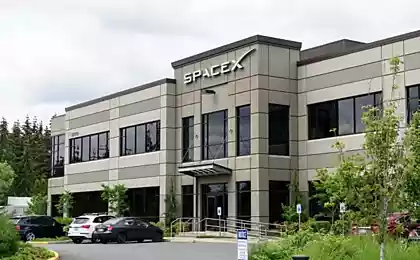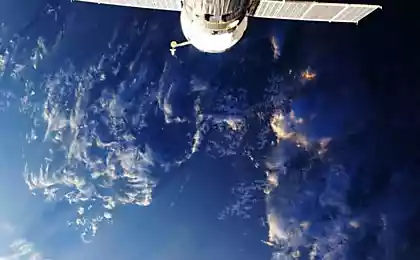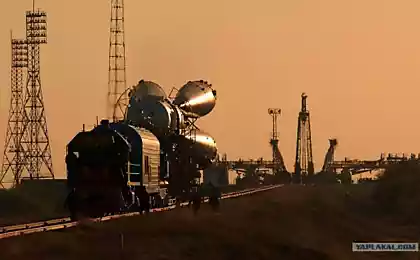1042
SpaceX CRS-7 lost. What's next?
On Sunday 28 June the launch of unmanned spacecraft SpaceX CRS-7 for the planned supply the International Space Station. After 2 minutes 19 seconds after launch at an altitude of about 45 km rocket experienced an unknown problem and exploded. There are no reports of casualties. The cause of the incident is still unclear, but the investigation is conducted. Next space truck start tomorrow morning. Now there is no question of the termination of the ISS, but start "Progress M-28M" is still important.
The launch vehicle Falcon 9 v1.1 was to put into orbit a spacecraft SpaceX CRS-7. This is the same Dragon, which the previous six times successfully supplied the ISS necessary supplies and scientific experiments. This is the same rocket Falcon 9, which counts 18 successful launches.
Capsule "Dragon" can be returned to Earth with several tons of cargo. At the moment it is the only transport vehicle that does not burn in the atmosphere and brings a few tons of cargo to the station. On the "union" in addition to 3 people can be returned only about 100 kg. The second version of the "Dragon" will be manned, it is connected with it many hopes NASA. In connection with the end of the "Space Shuttle" in 2011. NASA is currently not in a position to launch a man into space. Instead place in the "Soyuz" purchased from Russia.
CRS-7 нёсследующий cargo .
| Type of cargo th> | Weight triggered cargo th> | Mass return shipping th> |
|---|---|---|
| Supply Crew: standard diet food, fresh food, parcels | 676 kg | 32 kg |
| The equipment for the health of the crew, the control system environment and life support ( filters, cartridges, batteries and so on. d.), electrical systems, equipment Japan Aerospace Exploration Agency, Other flight crew | 461 kg | 20 kg tr > |
| Scientific experiments United States, Japan's space agency and ESA | 529 kg | 303 kg |
| commuter resources equipment for data processing and management, video and photographic equipment: cable, MicroSD card to 32 GB hard disk drives for laptops ThinkPad T61p, laptops and power supplies, adapters, RS-422, etc. | 35 kg < / | 1 kg |
| The equipment for spacewalks: EMU spacesuit gloves for Padalka, LCVG suit to wear under the spacesuit for Kelly, the various elements of spacesuits for other members current and future crews | 166 kg | 164 kg |
| Different return the goods, trash | - < / | 100 kg |
| The equipment in the unsealed part of the ship: IDA-1 (International Docking Adapter # 1) | 526 kg td > | - |
| Total packaging | 2477 kg |
But the ship and all its cargo had been lost due to anomalies in the third minute of flight. Among the unique cargo - points HoloLens . In the framework of the project Sidekick Microsoft has provided NASA's augmented reality glasses. The product has not been put on the market, but only shows the presentation of Windows 10 and the game conference E3.
Also lost was the docking adapter IDA, who was in the so-called trunk - unpressurized compartment of the "Dragon." Two of the adapter manufactured by "Boeing" designed for connection to the sealed docking adapters (PMA). Recent originally used for docking the shuttle to the ISS. Adapters are needed for future spacecraft. In case of a successful launch of IDA-1 is first removed from the trunk to CRS-7 arm, then during spacewalks to connect it manually. NASA still remains IDA-2, as есть parts to create a third adapter instead of the lost. The agency expects that there will be two adapters, as planned.
89,182,341
Lost docking adapter, НАСА
For the "Dragon" is the first bad start. Start was also interested in a third attempt to land the first stage of the Falcon 9 rocket to practice re-use of parts of missiles and related significantly reduce the cost of launch. In previous cases, the ship came the stage and sat down hard on him with destruction. This time the brand new barge, "Of course I still love you" has remained untouched.
50,836,016
«Of course, I still love you" before running CRS-7, SpaceX em> < br />
This is the second consecutive failure to start an unmanned spacecraft to the ISS and the third failed flight of a truck for 12 months. October 28, 2014 at the fifteenth second flight ended Cygnus CRS Orb-3. On April 28 this year, was launched «Progress M-27M", but control of the machine was lost. "Progress" went into an uncontrollable spin and was recognized debris. May 8 "Progress M-27M" 160 coil burned with all its cargo over the central Pacific Ocean.
Interestingly, the launch of SpaceX CRS-7 was not insured. Sum insured lost in April, "Progress M-27M» was 2 billion rubles, damages был otsenёn 5 billion. NASA will not reimburse any damage to organizations that have provided the goods to run. Someone already started crowdfunding to raise money to restart their experiments. Someone first experiment exploded in an accident Cygnus, and replacing была lost in the CRS-7. Despite two consecutive launch failure of supply, NASA заявляет, that the ISS remains enough supplies for at least until October. The loss of the "Dragon" will not affect the completion of the ISS on 23 July, "Soyuz TMA-17M».
The reasons of the incident are still being investigated. Two hours after the start of chapter SpaceX Elon Musk posted in his microblog account that says that the second stage oxidizer tank observed overpressure. Several media процитировал this statement as a cause of the accident, although later Musk explained , even after thousands of man-hours of work of engineers failed to find anything. The launch was made under license from the Federal Aviation Administration (Federal Aviation Administration, FAA), the loss is classified as an accident. SpaceX will carry out an investigation under the control of the FAA, NASA will help in the available means. The investigation could take months, speculate too early. Fans of conspiracy theories, for example, сделали a curious statement , that knocked Falcon 9 Lockheed Martin's own experimental laser as SpaceX hinders their contracts.
This is not the last start to supply the ISS this year. Tomorrow at 7:55:50 am состоится launch of "Progress M-28M» (Progress 60P, as it is called NASA). The ship carries 2381 kg of cargo (100 more than the previous "Progress"): 880 kg of fuel, 520 kg of propellant for refueling, 22 kg of oxygen, 26 kg of air, 420 kg of water and 1393 kg of various cargoes, including 430 kg of food and utensils. Despite Russian proposals , NASA decided not topped up the Russian truck as it drew off period would start.
97,081,605
Carrier rocket "Soyuz-U" with "Progress M-28M" on the launch pad, «Roskosmos» em>
In order not to risk because of the recent setbacks, "Progress" will be launched on a rocket "Soyuz-U" instead of "Soyuz-2.1a." As a single test be used more traditional two-day instead of a relatively new scheme, which allows to reach the ISS for 6-8 hours. The latter began to use in 2012. The docking module "Pirs" is scheduled for July 5 at 10:13 Moscow time. Rocket with the ship and have already collected brought to the launch pad "Gagarin start».
Also on August 16 Japan Aerospace Exploration Agency launched the "Kounotori-5» (HTV-5). September 21 will travel to the ISS "Progress M-29M". It is expected that later this year to launch its Orbital ATK truck Cygnus rocket Atlas V. The accident SpaceX will not lead to any forced return, no a simple experiment . Employment will remain as the Russians and the astronauts of other space agencies.
63,937,290
«Progress M-28M" to the head assembly, energia.ru em>
At the moment, the ISS cosmonauts Mikhail Kornienko are, Gennady Padalka and astronaut Scott Kelly. Updating crew be held July 23 only.
The start time of the next "progress": Friday July 3 at 7:55:50 am Moscow time (according to other sources - 7:52:00). Broadcasts begin in a few tens of minutes to start.
Where to watch the launch of "Progress M-28M»:
http://www.tsenki.com/broadcast/
Live broadcast from "Baikonur" on site "Roskosmos»
Channel NASA (all content in English)
Source: geektimes.ru/post/252890/
The special effects in the film «Mad Max: Fury Road». Part 2/2
In Dubai, will be 3D-printed building

